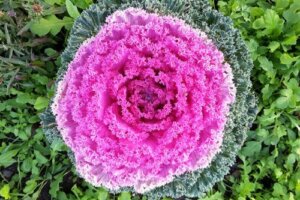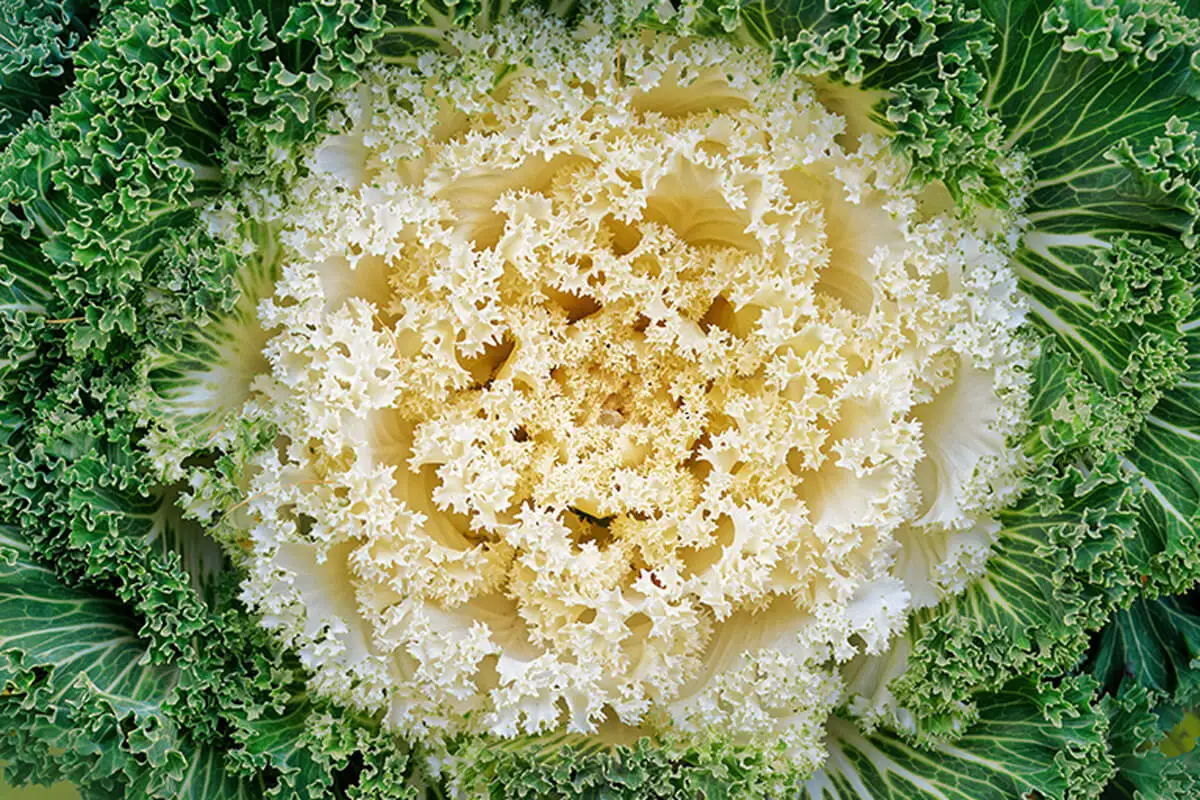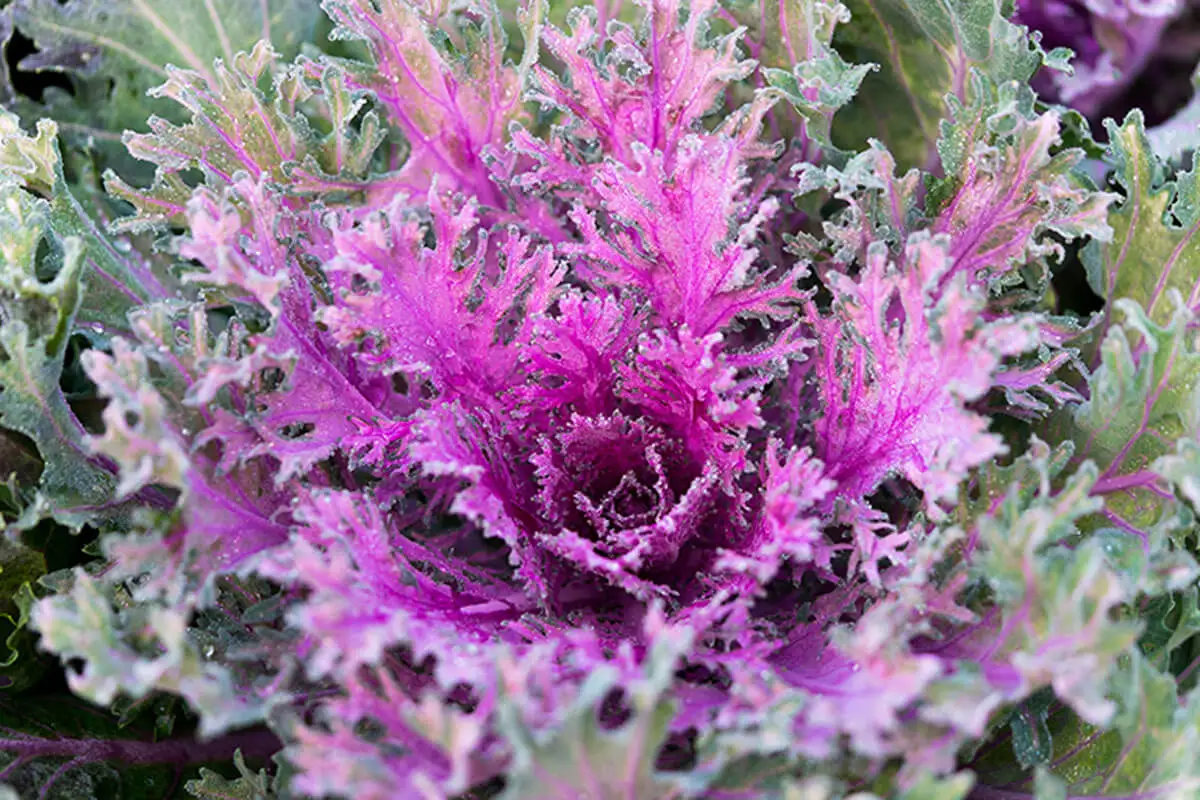Tips for Growing Colorful Ornamental Cabbages

Cabbages are edible plants and you can enjoy them in different preparations, but there are also some colorful ornamental varieties that stand out. Although it has a rosette shape, like other types of cabbage, the one we are going to describe in depth in the following lines blends very well with other species in the garden.
Do you want to know all the details about ornamental cabbage? We know you do, so keep reading!
What do ornamental cabbages look like? Get to know its characteristics
Ornamental cabbages have thicker and shinier leaves than regular cabbage. As we mentioned before, it also has a rosette shape and this makes it look like a large succulent from a distance.
In fact, being native to areas with limestone soils and high salinity levels, this type of cabbage has the ability to store water in its leaves.
Ornamental cabbages have intense purple, white, pink and green colors, which intensify when the plant reaches maturity, that is, in the first year of life. There are even some, such as Brassica oleracea var. acephala which are tricolor: purple, green and white. Or the rainbow Candy Crush, which oscillates between dark green and purple tones in different intensities.
After the first year of life of the plant, its colors remain intense for another year. This, considering that it is a biennial species. Two years after germination, the plant will die.
The word “ornamental” does not mean you cannot eat a plant. On the contrary. Many people grow it ornamentally and, after a year or more, eat it.
You will notice that in the second year of germination, the ornamental cabbage blooms and becomes the home of multiple animals that come to it in search of pollen, such as butterflies, beetles and hummingbirds. What a beautiful job they do prior to their farewell!

Cultivating ornamental cabbages
Ornamental cabbage is as beautiful as it is simple, and so is the care you need to give it to keep it. Take note and enjoy watching your new plants grow, while they fill your garden with color.
1. Get the right substrate and fertilizer
Ornamental cabbage needs a fertile substrate with good drainage so that excess water can circulate without affecting the plant’s roots. The substrate should be controlled so that it is not too acidic.
It also needs to be compact. So it is a great idea to mix the soil with peat, worm humus, tepojal (helps with drainage) and lime for alkalinity.
This last product should only be put in if the soil does not have the expected pH. To find out, you can do an acidity test. If the pH measured is between 6 and 7.5, it is alkaline; if it is at 5, it is neutral and will be fine; but if the result is lower, then you should apply lime until it is balanced.
The fertilizer should be applied once a year, together with a fertilizer rich in phosphorus and potassium, with 0% nitrogen. This material increases the probability of fungus growth.
2. Have the right lighting and temperature
In addition to providing the ideal substrate, the ornamental cabbage needs a space where the temperature is between 15 and 18 degrees Celsius. Although it must be said that it tolerates frosts like a warrior. Moreover, the cold makes its colors intensify like never before.
This means that the light provided can be direct sunlight or partial semi-shade; it will know how to adapt without any problem. However, during the winter, you should put the cabbages where they get as much sunlight as possible.
3. Water properly
When we talked about the soil, we emphasized its drainage capacity. This is because alkaline soils do not absorb water very well, putting the roots at risk of waterlogging.
This reminder is to tell you that you must take care of the substrate because ornamental cabbages need a lot of water, but it must be properly decanted.
4. Perform the right maintenance
Ornamental cabbages are susceptible to pests such as caterpillars, snails and pigeons. If you like their taste, so do these visitors.
As they are edible, you should protect them from these attacks without resorting to pesticides or chemicals. The best are always the homemade and natural alternatives, friendly to all forms of life.
This same advice applies to the treatment of white rust, classic of chrysanthemums, but also common in cabbages. One way to prevent this is to not get the leaves wet when watering.
3 ornamental cabbages you must have in your garden

Now that you know how to take care of your ornamental cabbages, we are going to recommend you three types that shine for their beauty and that you should take the risk of having. Here are their reviews!
- Crane series: this type of ornamental cabbage has curly leaves and comes in a range of incredible colors, such as strong pink, red and bicolor, between pink and yellow.
- Coral queen: it has feathery leaves with a purplish red color in the center.
- Nagoya: it is also a curly variety that stands out for its more pastel colors, such as white, pink and red.
You don’t have to choose between any of these three varieties of ornamental cabbage – you can have them all! Their care is the same as above, so have a colorful and beautiful garden where cabbages are the protagonists.
All cited sources were thoroughly reviewed by our team to ensure their quality, reliability, currency, and validity. The bibliography of this article was considered reliable and of academic or scientific accuracy.
- Bonde, M. R., Murphy, C. A., Bauchan, G. R., Luster, D. G., Palmer, C. L., Nester, S. E., … & Berner, D. K. (2015). Evidence for systemic infection by Puccinia horiana, causal agent of chrysanthemum white rust, in chrysanthemum. Phytopathology, 105(1), 91-98.
- Šamec, D., Urlić, B., & Salopek-Sondi, B. (2019). Kale (Brassica oleracea var. acephala) as a superfood: Review of the scientific evidence behind the statement. Critical reviews in food science and nutrition, 59(15), 2411-2422.
This text is provided for informational purposes only and does not replace consultation with a professional. If in doubt, consult your specialist.








